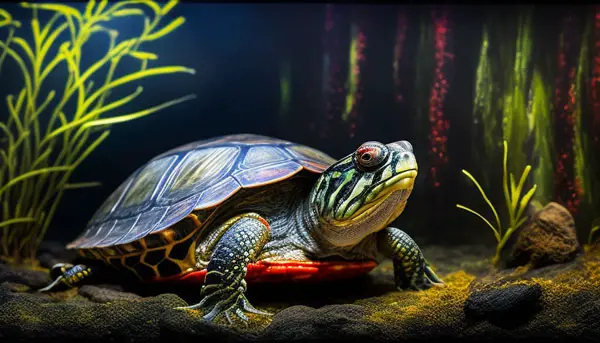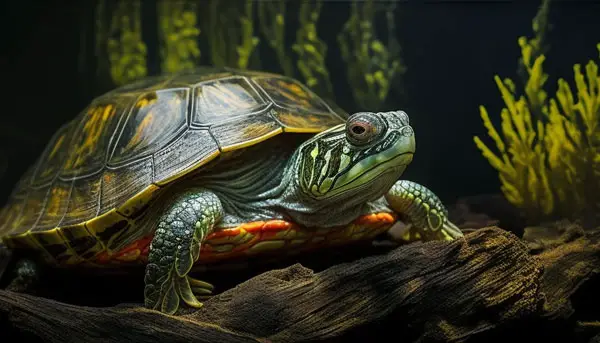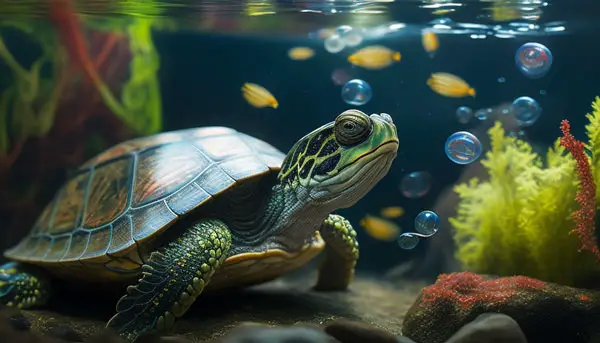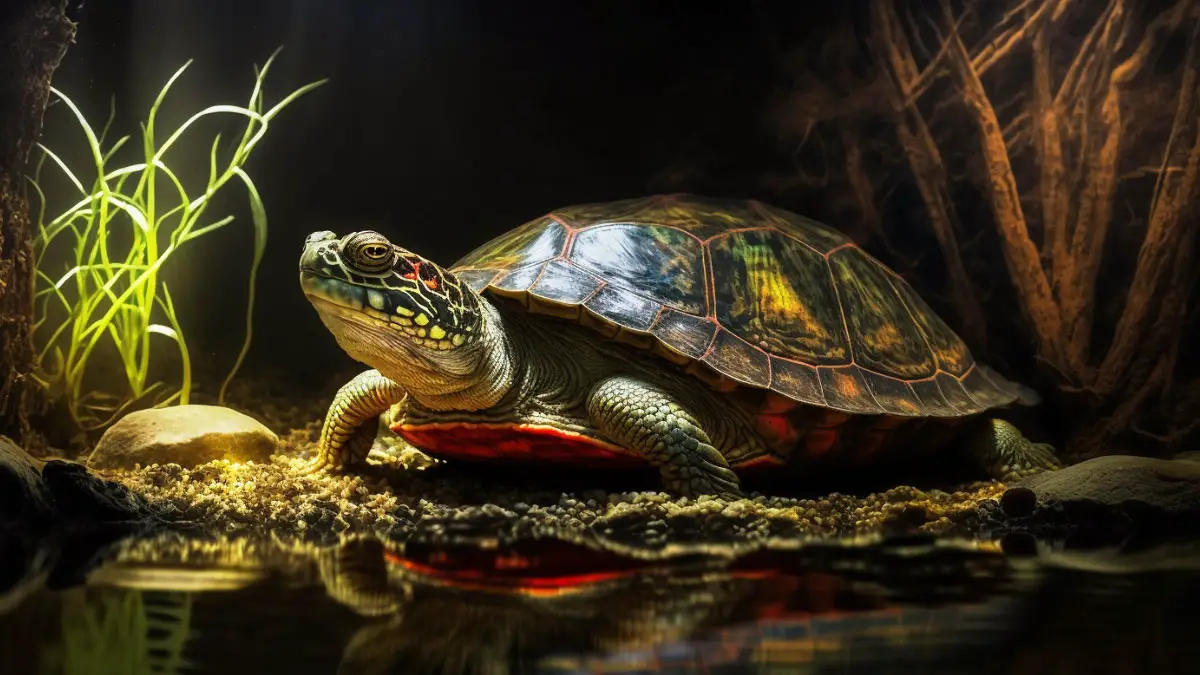How to Deal with Aggressive Behavior in Pet Turtles
Have you lately noticed aggressive behavior in your turtle towards you or other turtles? Are you wondering why your turtle is starting to behave like this and what you can do to prevent this behavior in your turtle? If yes, this guide will help you out.
Belo, we have discussed helpful info on how to deal with aggressive turtle behavior. We’ve covered the common causes of aggression in turtles and various methods you can apply to help prevent and correct this behavior in your pet turtle.
How to deal with aggressive pet turtle behavior
Contents
For you to stop aggression in your turtle, you’ll first need to understand what triggered it in the first place.

Here are the most common reasons why your turtle may suddenly start showing aggressive behavior:
Stress
Your pet turtle can get easily stressed, whether it’s by loud noise, a home pet trying to get into its tank, improper handling, poor living conditions (more details discussed below), etc.
When stressed, it may start showing aggressive behavior. Besides, a stressed turtle may also stop eating, basking, and even try to leave its tank.

The best thing you can do here is to identify the potential stressors around your turtle’s enclosure and eliminate them. This can help your turtle calm down and go back to its normal behavior.
Territoriality/space
Another potential reason behind your turtle getting aggressive is if it becomes territorial about its space. This usually happens when you have more than one turtle housed in the same tank.
Your turtle may also turn aggressive when you introduce another turtle as it feels its space is being invaded.
Mating process
If you’re housing both males and females in the same tank, then you may also witness the male turning aggressive towards the female.
This is a mating behavior in turtles and nothing to worry about. The males usually nip the females’ necks, tails, or feet, as a way of expressing interest in mating with the male.
Poor living conditions
Housing your turtle in poor living conditions is another reason to make them aggressive.
For instance, if your turtle tank water temperature is inappropriate or the water becomes dirty, your turtle may try to escape the tank.

And if you try to interact with it at this time, it may think you’re trying to stop, and it may show aggressiveness.
Lack of a basking area can also make your turtle aggressive. Turtles usually compete for basking spots in the wild, so lack of one in captivity can make them aggressive.
Food
As you may already know, turtles in the wild usually compete for resources such as food and survival. This is a natural instinct for turtles, and their relatives in captivity are also likely to express the same behavior.
So, if your turtles start being hostile to each other whenever you provide them with food, then they’re most likely fighting for food.

Still at it, not giving your pet turtle enough food or a proper diet can also make it feel weak and vulnerable.
As a result, it may start showing aggressiveness. Trying to bite you could mean that it feels hungry and you need to feed it as quick as possible.
Pregnancy
Female turtles also tend to become aggressive when they become pregnant. In addition, they may start showing strange behavior such as refusing to eat, basking, trying to dig everywhere, and sometimes wanting to escape the tank.
If you notice your aggressive turtle showing these additional behaviors, then it’s definitely pregnant. In this case, aggressiveness is usually a natural instinct for them to help protect their eggs. So, you should interpret this as your turtle not liking you.
Prevention methods for aggressive behavior in turtles
Here are some helpful tips on how to prevent aggression in turtles:
- One way to prevent aggressive behavior in your pet turtle is by ensuring it has suitable living conditions. This will keep away stress and keep your turtle happy. Ensure it has a spacious enclosure where it can swim and move around freely.

Provide your turtle with hides pots and comfortable basking spots, and keep the water in their enclosure clean. Also, provide the turtle with the ideal lighting and heating conditions.
- Eliminate all potential stressors in your turtle’s environment such as loud noise, too much or improper handling, and other house pets.
- Another way to keep your turtle calm and peaceful is by providing it with environmental enrichment. Consider providing it with accessories such as toys, aquatic plants, and other décor items that help alleviate stress as well as aggressiveness.
- Give your turtle a balanced diet and feed it the right amount of food to keep it from getting stressed. Try as much as possible to stick to the same feeding schedule for your turtle.
- If your turtle species likes to be petted, then you can try spending some time interacting with it. You can also let it out of the tank and let it roam in a safe and controlled area.

But keep in mind that turtles generally don’t like handling, so you should keep it to a minimum. If your turtle offers subtle signs that it doesn’t like the petting, just stop and putting back it into its tank.
- NEVER physically punish your turtle. The creature doesn’t know right or wrong and doing so will only make it more stressed. And depending on the species, this may worsen its aggressiveness towards you.
- Above all, you should keep a close eye on your turtle and watch out for additional behavior such as sudden aggression.
Look out for signs of stress in your turtle such as refusing to eat, hiding, refusing to bask, wanting to get out of the tank, etc.
Correction methods for aggressive behavior in turtles
The most effective correction method for aggressive behavior in your pet turtle involves positive reinforcement training. This is where you reward a desirable behavior in your pet by giving it a special treat.
This is how it works;
If your turtle becomes aggressive whenever you approach its enclosure, you can try rewarding it for staying calm and non-aggressive when interacting with it.
If you have identified a stimulus or object that causes aggression in your turtle, you may also try eliminating them and then reintroducing them to your turtle gradually.

Reward your turtle for staying calm every time you bring the stimulus around.
If the behavior worsens and nothing seems to help, then you’d want to consult your veterinarian. The vet may easily pinpoint the cause of aggression in your turtle.
They’ll then devise a plan to help your turtle start acting normal again.
Final Verdict
Understanding what is causing aggression is crucial for you to help your turtle to start acting normal again. Some reasons your turtle may start suddenly exhibiting this behavior include stress, territoriality, poor living conditions, mating period, pregnancy, and competing for food and other resources.
We recommend taking action immediately you notice you notice this behavior to try and find out the reason behind it. The prevention/correction tips we’ve discussed in the above guide will help you deal with this undesired behavior in your pet turtle. If nothing seems to work for your turtle, consult your vet for professional assistance.


